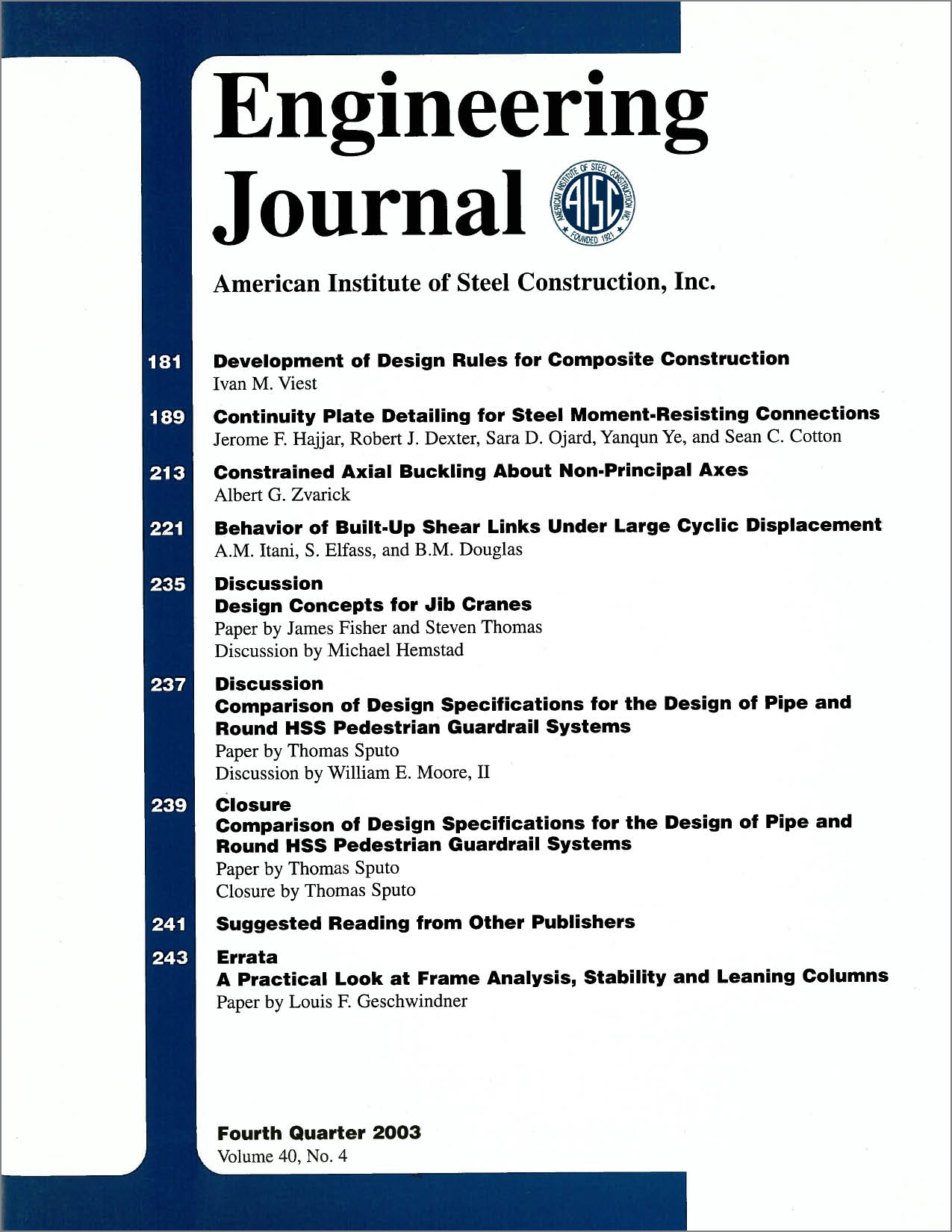Continuity Plate Detailing for Steel Moment-Resisting Connections
DOI:
https://doi.org/10.62913/engj.v40i4.815Abstract
The 1994 Northridge, California earthquake resulted in the fracture of complete-joint-penetration groove (CJP) welds connecting girder flanges to column flanges in steel moment-resisting connections in a number of steel frame structures ranging from one to 26 stories in height (FEMA, 2000a). These welds fractured due to a combination of reasons, including the weld material having low fracture toughness; the pre-Northridge connection geometry making the CJP welds more susceptible to high strain and stress conditions; and welding practices that resulted in inconsistent weld properties (FEMA, 2000a). As a result of these fractures, in the subsequent years there has been a tendency to be more conservative than necessary in the design and detailing of steel moment-resisting connections both in seismic and non-seismic zones within the United States. In particular, continuity plates and web doubler plates have often been specified when they are unnecessary and, when they are necessary, thicker plates have been specified than would be required according to the applicable specifications. In addition, the welds of the continuity plates to the column flanges have often been specified as being complete-joint-penetration groove welds, even though the use of more economical fillet welds may have sufficed. This paper has given the background of the local web yielding and local flange bending limit states and the conclusions of previous researchers regarding the behavior of continuity plates and the welds attaching them to columns. It has also summarized the results of nine pull-plate tests and corresponding finite-element analyses studying column-stiffening details. The preliminary conclusions from these tests are focused on monotonic loading applications and will be synthesized with future cyclic loading experiments, with implications for seismic design, in Lee and others (2002) and other ongoing research.

